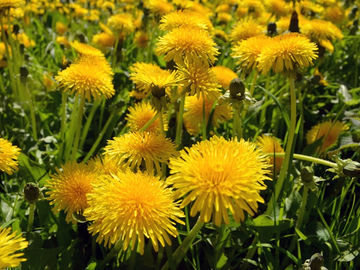Herb of the Month
- The Wild Hub CIC
- Aug 7, 2024
- 3 min read

Borage (Borago officinalis) AKA starflower
Indigenous to the Mediterranean region, borage was taken by early settlers to Europe and North America where it was naturalised and thrives today. Our ancestors believed it had a strong impact on the body by instiling courage, dispelling despair and inducing a sense of wellbeing.
This take on the herb is backed by modern research which has shown that borage works on the adrenal gland, which affects the body's response in a crisis!
The leaves and flowers of the plant are edible and commonly used as a garnish for salads, crystallised for cake decoration, or frozen into pretty ice cubes. The leaves can also be ground up and steeped in hot water for a herbal tea.
Benefits:
1. Borage is an edible crop, although it can be toxic if taken in excess. People with liver problems, or pregnant and breastfeeding women should avoid it. Consult a doctor first if you're on any medication.
2. Borage is a Dynamic Accumulator in the garden, meaning it gathers nutrients from the soil and stores them, reducing the amount of nutrient leaching. It is said to be particularly good at accumulating potassium, so it would make a good companion plant for those that flower and fruit: tomatoes and strawberries for example.
3. Because it stores the nutrients, Borage can also be a great mulch to chop and scatter around other plants in the garden, or great on the compost heap or as a liquid fertiliser.
4. Bees and aphids love Borage, so it can attract pollinators and help keep nearby plants pest free.
5. Borage roots help break up and aerate your soil, so it's a good cover crop to sow to improve soil quality before other crops are grown.
6. Borage is rich in gamma linoleic acids (GLAS), an omega-6 fatty acid that's been shown to decrease inflammation, so it may help with the treatment of asthma, rheumatoid arthritis and atopic dermatitis.
How to identify them:
The leaves and stems of a borage plant are hairy and the flowers are shaped like stars with five points. The flowers are generally blue (darker blue in poorer soil conditions) but some pink flowers could be observed and there are white-flower cultivars.
How to grow them:
Borage prefers full sun and well-drained soil, but can cope in most soil types if necessary. Sow seeds where you want them to flower as they don't like being transplanted. As they get bigger they may need to be supported as they tend to flop over easily.
You can deadhead or pick the flowers regularly to ensure a longer flowering period, and you should consider removing the plants when they die in the autumn as they happily self-sow.
How to harvest them:
You can pick their flowers and young leaves when needed, making sure to wear gloves as the leaves and stems are covered in small prickles. They get more prickly with age.
!Be mindful of any allergies or allergic reactions when making anything with plants. Test sparingly before use !
Disclaimer
Please note that while these herbs have potential health benefits, they should not replace professional medical advice or treatment. Always consult with a healthcare provider before adding new herbs to your routine, especially if you have underlying health conditions or are taking other medications. The recipes provided are for informational purposes only, and individuals should use them at their own risk. When out foraging, please do your own research on identification of plants or ask an expert, don't risk you health.
.jpg)






Comments